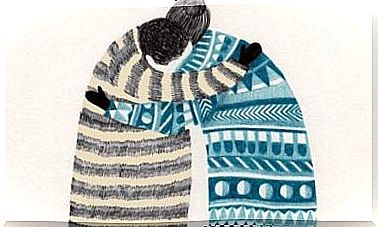How To Recognize The Temperament Of Children

Maya Angelou said, and certainly not without reason: “If I have a monument in this world, it is my son.” As nice as that phrase is, the truth is that we often pull our hairs because of our children. Either because of their bad behavior or because they are too passive. The fact is that children’s temperaments are very different. We have to get used to it!
We must not forget that a child’s temperament becomes apparent from a very young age. The way they grow up and their social environment will have an impact on their temperament and personality, but a lot is also in the genes and is therefore natural.
Children’s temperament
“A baby is a blank check for humanity.”
Barbara Christine Seifert
In fact, we can get an idea of what our child will be like very early on. While it will develop certain properties to a certain extent, there will be aspects that will hardly change or not at all. It is therefore very important to know the temperament of your own child, even if it is still a baby. This knowledge corresponds to valuable information about how, for example, we can effectively promote it.
Scientifically speaking, we can attribute three types of temperament to children. On the one hand we have the “easy children”. At the other end of the spectrum, we have the “difficult children”. And to complete the set there are the “apathetic children”. We will describe all of these below.

Obviously, when we classify children in this way, we are generalizing. The fact is, these three personality types are not absolute. For example, a child might be apathetic and have a difficult character at the same time. Perhaps you also have an “easy child” who is apathetic at times, or an apathetic one who is very easy to treat at times.
The above-mentioned classification is also not complete. However, it can serve as a guide to understand your child and deal with their specific temperament.
- According to studies, 40% of babies have a mild temper. That is, they are quite easy to raise, usually have no problems with their temperament, and easily acquire healthy habits. These children easily adapt to changes and understand from an early age how to follow the rules. They tend to smile at both acquaintances and strangers.
- Children with a difficult temperament make 10% of all babies from . Your parents must be extremely patient almost 24 hours a day due to the difficulty of raising this type of child. You could say that these kids are real experts at testing their parents’ patience. In general, these children are often irritable and find it difficult to develop healthy habits. It is therefore necessary to consistently set boundaries, apply a good teaching approach and love so that they become a little calmer. These children tend to feel insecure and not loved, which often makes them suspicious.

- They make up 15% of babies and are characterized by being exceptionally relaxed. It’s rare for them to complain about anything and they adapt perfectly to change. Indeed, this type of baby shows a certain indifference to external stimuli. They are children to whom the outside world normally pays little attention. They are perceived as predictable or at least more predictable and less surprising than other children of their age. In reality, their indifference to what surrounds them is not a sign that they like it, but rather an adjustment to their environment.
All of these babies and children should be treated on the same premise: we should try to contain the more problematic aspects of their temperaments and reinforce those that are not. With this in mind, it is important to know the child’s temperament if we are to teach them anything. For example, spirited children learn better if we let them try things and correct them while they are active. We can explain something to quieter children both before and after the attempt.
The other 35%
After all, we have the 35% of children who don’t have just one of these patterns. You have a mixed personality. That is, they show characteristics of more than one form of temperament. As we mentioned earlier, the child’s temperament can vary depending on the situation. Then there is no clear pattern, although one prevails in most babies.
“A baby is something you carry inside you for nine months, in your arms for three years, and in your heart until you die.”
Mary Mason
And after everything we’ve shared with you, can you tell us what your child’s temperament is? While this information is fairly general, it can be very useful as a guide. Understanding our children is important if we are to intelligently contribute to their development.









